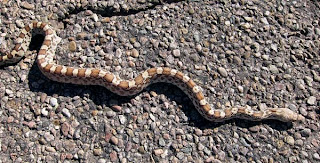I know most people have this issue already figured out, but I also know that some find it confusing. In addition to what I wrote in a previous post, I thought I would give a simpler example.
So let's say there's a party of two birders covering an area. They bird for one hour and walk one mile together. Easy: That's one party-mile by foot, and one party-hour. Then they split up (out of earshot at least) for one hour. They each walk one mile during that hour and meet up again back at the car. Since they are separate, each birder is a "party." So during this time, for their CBC area, they racked up two party-miles by foot and two party-hours. Adding that to the previous total comes to 3 party-miles and 3 party-hours. Then they get in their car and drive to the compilation dinner. For 1/2 hour and 3 miles of driving they are still in their area of the circle and spot one bird flying over. Their total for the day is:
party-miles by foot: 3
party-hours by foot: 3
party-miles by car: 3
party-hours by car: 0.5
This being a simple example, these birders vastly uncovered their area. The area that Art Schaub and I covered last year, Pine Canyon, has no roads, and we didn't split up. So it was merely a matter of zeroing the trip odometer on my GPS receiver when we started hiking. By the end of the day we logged 9.65 party-miles and 8.2 party-hours, all by foot. But since we had camped there and got up at 4:30 to some owling, I also kept track of the 2.25 miles and 2.5 hours of owling.
Photo at top: Habitat at Peña Blanca Lake, which has hosted several rarities in the past, including the state's first record of Sedge Wren this winter.
Photo at bottom: Gopher Snake crossing the road at Peña Blanca lake on December 11. If it's warm enough, this species can be found even in mid-winter.
Monday, December 20, 2010
Subscribe to:
Post Comments (Atom)



No comments:
Post a Comment